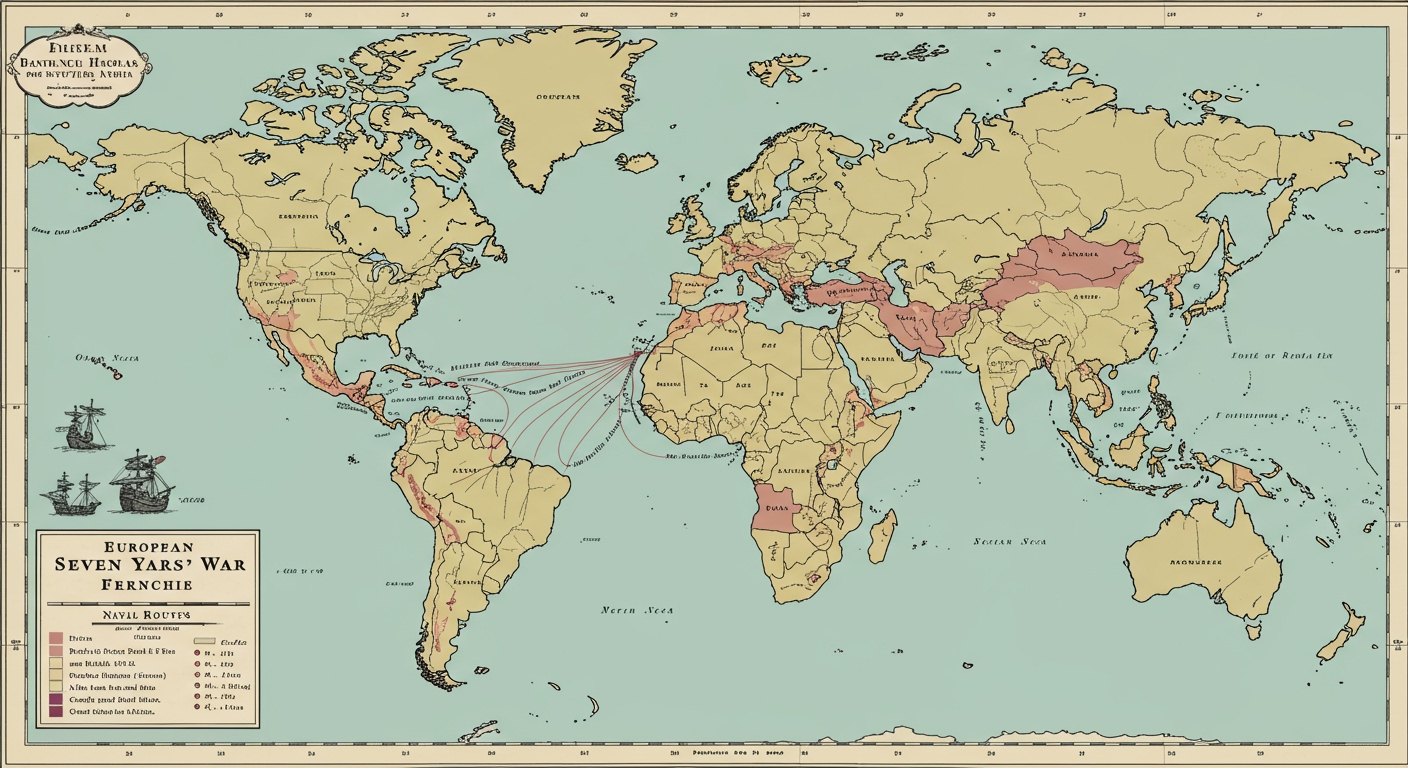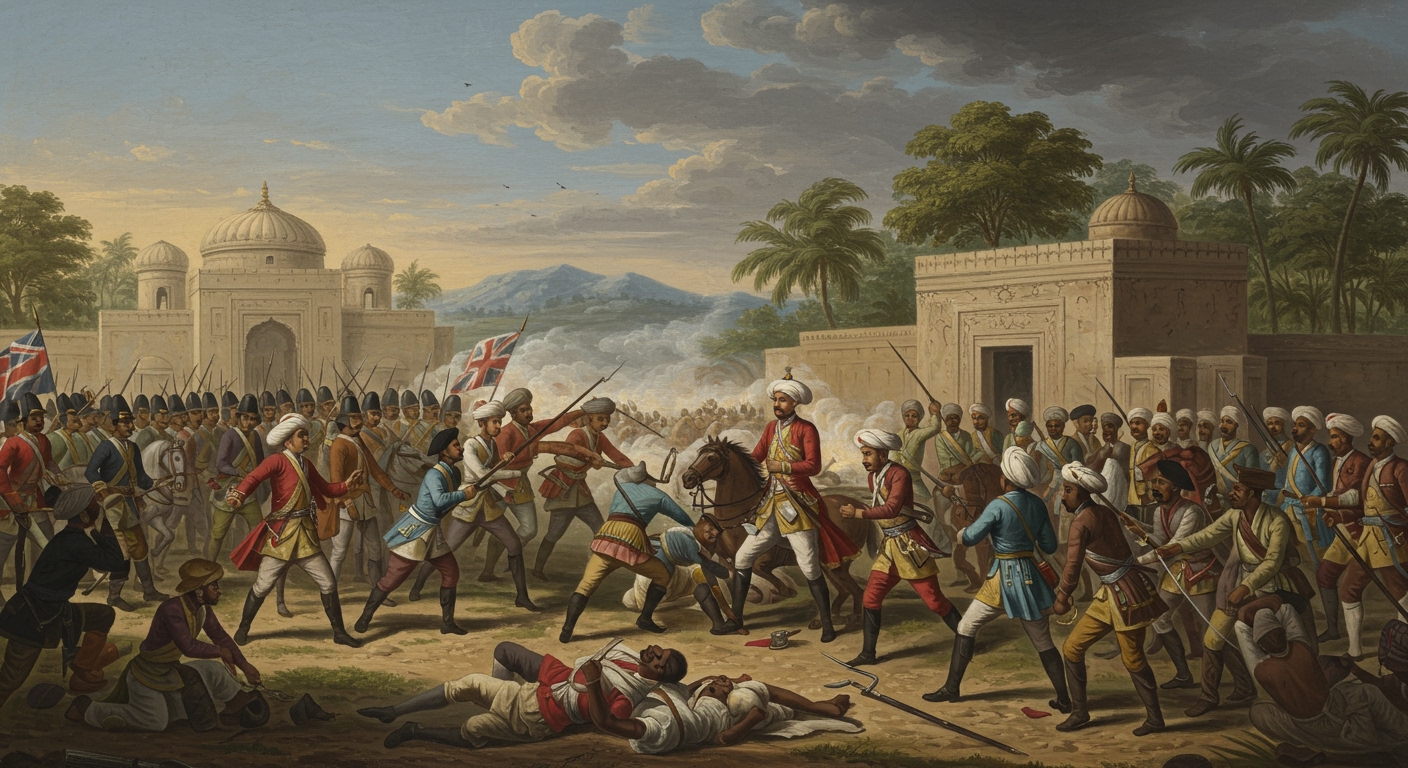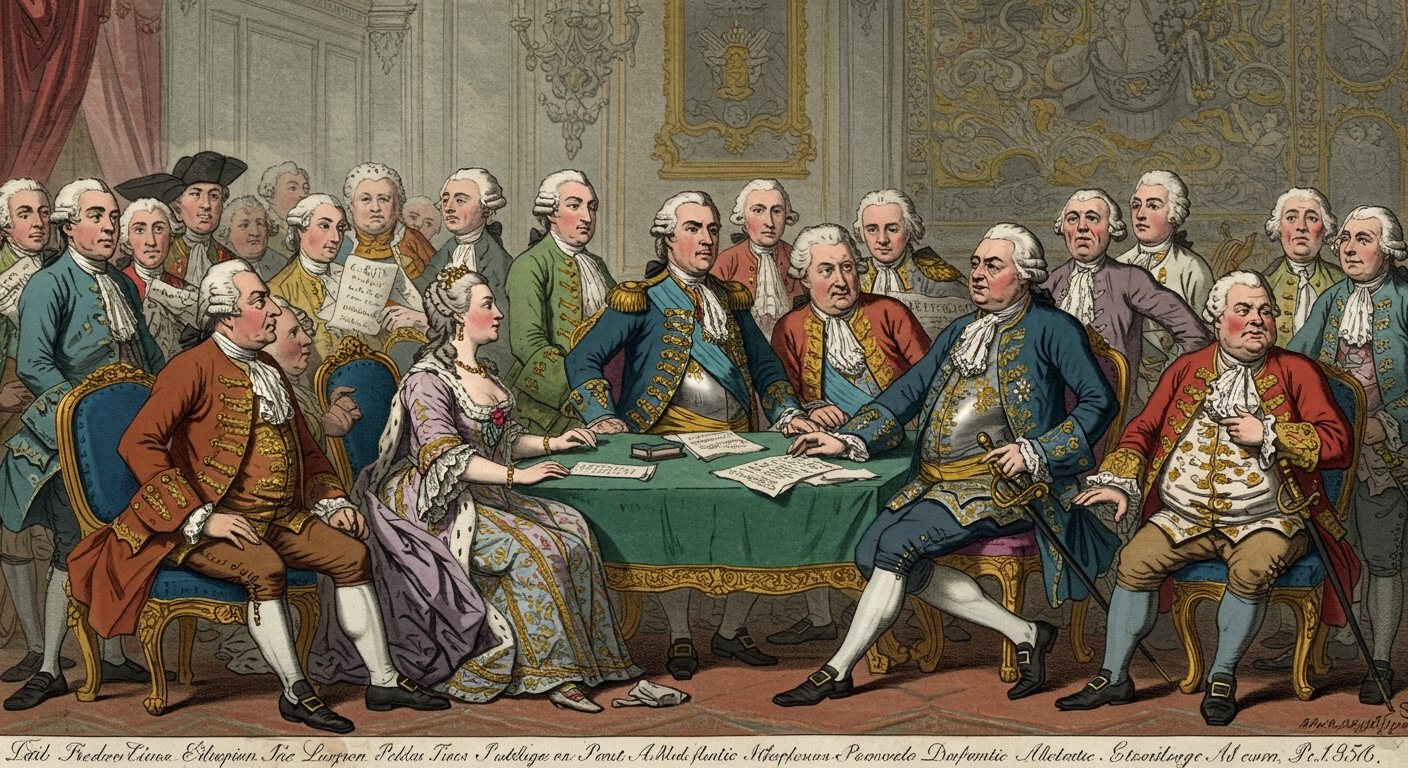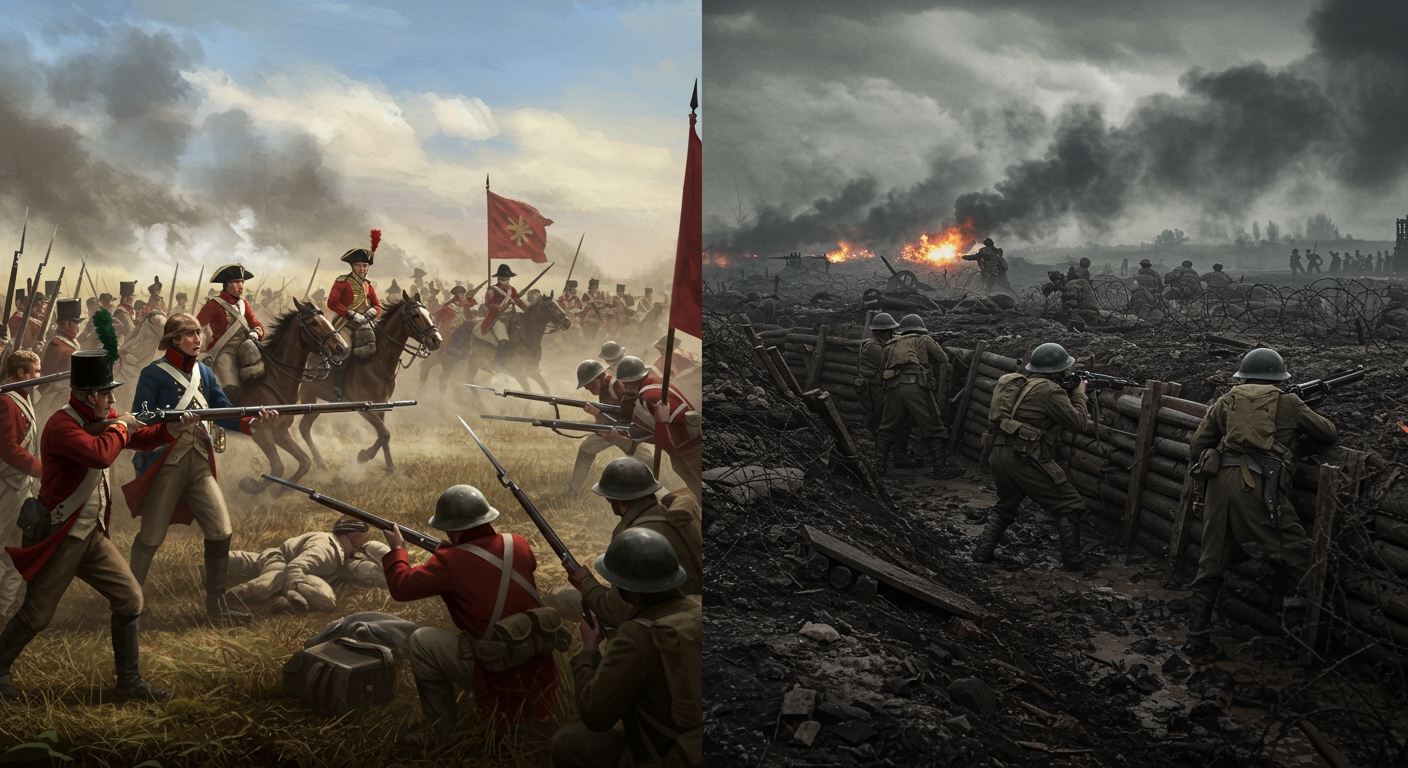For many, the mention of the “First World War” immediately brings to mind the brutal trench warfare and global devastation of 1914-1918. This conventional view, deeply ingrained in our historical consciousness, paints a picture of a conflict ignited by the assassination of Archduke Franz Ferdinand, characterized by unprecedented industrial-scale slaughter and new, terrifying technologies. Yet, a growing chorus of historians, including figures as prominent as Winston Churchill, argues for a different contender for the title: the Seven Years’ War (1756-1763). This article delves into the compelling argument that this earlier conflict may, in fact, be the real first world war, challenging our understanding of global geopolitics and the true dawn of interconnected warfare.
Defining a “World War”: What Makes a Conflict Truly Global?
Before we can crown a “first” global conflict, it’s essential to establish what truly defines a world war. For a conflict to earn this weighty title, it must typically meet several criteria:
- Geographic Scope and Multiple Theaters: The fighting must extend beyond a single continent, encompassing multiple disparate regions and oceans.
- Involvement of Great Powers and Their Colonies: Major European powers, with their extensive colonial empires, must be direct participants, drawing their overseas territories into the fray.
- Long-Term Global Consequences: The conflict should fundamentally reshape the international balance of power, creating ripple effects that influence global events for decades, if not centuries, to come.
The Seven Years’ War: A Deep Dive into the “First Global War”
With these criteria in mind, let’s turn our attention to the Seven Years’ War, a conflict often overshadowed by its 20th-century successor, but one that undeniably meets the definition of a truly global struggle.

Causes of the First Global War: Imperial Rivalries and European Tensions
The roots of this vast conflict were tangled, stemming from both European dynastic struggles and burgeoning colonial ambitions:
- Unresolved Issues from the War of Austrian Succession (1740-1748): The previous conflict left lingering territorial disputes, particularly the bitter rivalry between Austria and Prussia over Silesia, a wealthy province Prussia had seized.
- The Diplomatic Revolution of 1756: A dramatic realignment of traditional alliances saw France and Austria, long-standing adversaries, form an alliance. This was a direct response to Great Britain’s alliance with Prussia, overturning centuries of European power dynamics and setting the stage for a massive confrontation [1].
- Colonial Expansion and Economic Competition: Perhaps the most significant driver for its global nature was the intense rivalry between Britain and France. Both sought control over lucrative trade routes, raw materials, and vast territories in North America, India, and the Caribbean.
The Ohio River Valley Dispute and the French and Indian War
In North America, this rivalry manifested as the French and Indian War (1754-1763), a key theater of the broader conflict. Disputes over the fertile Ohio River Valley, crucial for westward expansion and fur trade, ignited hostilities between British and French colonists, alongside their respective Native American allies.
Competition for Commercial Dominance in India (Third Carnatic War)
Thousands of miles away, in India, the British and French East India Companies clashed repeatedly in what became known as the Third Carnatic War. These battles were not just for commercial dominance but for political control, fundamentally shaping the future of the Indian subcontinent and paving the way for the British Raj.

Global Reach and Key Theaters of Conflict
The Seven Years’ War truly earned its global moniker through its unprecedented geographic spread:
- Europe: Prussia, under the brilliant military leadership of Frederick the Great, fought a desperate struggle against a coalition including Austria, France, Russia, and Sweden.
- North America: The French and Indian War saw significant battles like the Siege of Quebec, fundamentally altering the continental balance of power.
- India: Battles like Plassey were decisive in establishing British supremacy.
- Other Theaters: Fighting also erupted in the Caribbean (e.g., Havana, Martinique), West Africa (e.g., Senegal), South America, and across the world’s oceans through extensive naval engagements.
Major Belligerents and Alliances
The conflict involved a complex web of alliances:
- Britain-Prussia Alliance: Great Britain, Prussia, Hanover, Portugal, several German states, and the Iroquois Confederacy.
- Franco-Austrian Alliance: France, Austria, Russia, Spain, Sweden, Saxony, the Mughal Empire (nominally), and the Abenaki Confederacy.
Significant Battles and Campaigns
From the plains of Europe to the forests of North America, the war was marked by pivotal engagements:
- European land battles: Rossbach and Kunersdorf showcased Frederick the Great’s tactical genius and Prussia’s resilience.
- Colonial victories: The capture of Quebec by British forces and the Battle of Plassey were critical in securing British imperial dominance.
Outcomes and Immediate Aftermath
The war concluded with two major treaties in 1763: the Treaty of Paris and the Treaty of Hubertusburg. The outcomes were transformative:
- Territorial changes: France ceded vast territories in North America (including Canada) to Britain and Spain, and much of its influence in India. Britain emerged as the dominant colonial power.
- British dominance: The war cemented Britain’s position as the pre-eminent global colonial and naval power, a status it would largely maintain for the next century.
Real First World War Historical Analysis: Why the Seven Years’ War Qualifies
When subjected to a rigorous real first world war historical analysis, the Seven Years’ War consistently emerges as a strong candidate for the title.
Historians’ Consensus
Many modern historians and astute observers like Winston Churchill have long acknowledged its truly global scope. Churchill famously called it “the first world war,” recognizing its unprecedented scale [2].
Unprecedented Scale and Interconnectedness
It was the first conflict to genuinely link distant regions and their economies into a single, interconnected war system. Events in the Ohio Valley had direct repercussions in European capitals, and naval battles in the Atlantic influenced colonial holdings in India.

Drawing Distant Powers into Conflict
The involvement of non-European entities, such as various Native American nations and the Mughal Empire, further underscores its global nature, demonstrating how European imperial ambitions drew diverse populations into their struggles.
Lasting Geopolitical Transformations
The war’s legacy was profound, initiating several major geopolitical shifts:
- Rise of the British Empire: The war solidified Britain’s position as the dominant global empire, laying the foundation for its vast colonial network and naval supremacy.
- Seeds of Revolution: The immense financial costs of the war strained the treasuries of both Britain and France. For Britain, this led to attempts to tax its American colonies, sparking grievances that would culminate in the American Revolution. For France, the debt contributed to the financial crisis that would eventually fuel the French Revolution [3].
- Reshaping the Global Map: The treaties of 1763 dramatically redrew colonial boundaries, influencing modern geopolitics and the distribution of power for generations.
Seven Years’ War vs. World War I: A Comparative Analysis
To truly appreciate the Seven Years’ War’s claim, a Seven Years’ War vs World War I comparative analysis is essential. While distinct, they share intriguing parallels and crucial differences.
Similarities: Global Scope, Great Power Involvement, Casualties
Both conflicts:
- Involved major European powers and their extensive empires fighting across multiple continents.
- Resulted in significant loss of life. While WWI’s casualties were on an industrial scale, the Seven Years’ War also led to an estimated 1 to 1.5 million deaths worldwide, a staggering figure for its era [4].

Key Differences:
- Technological Advancement and Industrial Warfare: WWI was defined by unprecedented industrial scale, new weapons like tanks, poison gas, airplanes, and U-boats, alongside the static horrors of trench warfare. The Seven Years’ War, by contrast, was a “classical” conflict, fought with muskets, cannons, and cavalry, reflecting 18th-century military technology.
- Nature of Mobilization: The Seven Years’ War was largely a “rulers’ war,” fought by professional armies and navies, albeit with significant colonial involvement. WWI saw mass conscription and the mobilization of entire societies, driven by fervent nationalism and a total war ethos.
- Ideological Underpinnings: While both had elements of imperialism, WWI was heavily influenced by complex alliance systems, intense nationalism, and a delicate “balance of power” dynamic. The Seven Years’ War was more rooted in dynastic rivalries, colonial expansion, and mercantilist economic competition.
- Immediate Global Impact and Redrawing of Maps: WWI led to the collapse of four major empires (Ottoman, Austro-Hungarian, Russian, German) and the creation of numerous new nations, profoundly and immediately reordering the global political landscape. The Seven Years’ War’s impacts, while foundational, were more geared towards the growth of existing empires rather than their immediate collapse.
The Enduring Legacy: Re-evaluating the “First World War” Title
The question remains: why did the term “World War I” stick for the 20th-century conflict? It’s largely due to contemporary perception, the sheer scale of destruction, and the widespread media coverage at the time it was named. However, ignoring the Seven Years’ War’s global scope means overlooking a critical precursor to modern global conflicts.
The Seven Years’ War serves as a powerful demonstration of global interdependencies, shifting military-economic strategies, and the profound challenges of managing vast empires. Its influence on the trajectory of imperialism and the subsequent age of revolutions is undeniable [5].

Conclusion: The Real First World War – A Redefined Understanding
When considering its extensive geographic scope, the involvement of major global powers and their colonial networks, and its lasting international impact, the historical case for the Seven Years’ War as the real first world war is compelling. Acknowledging this earlier, truly global conflict enriches our understanding of modern power dynamics, the evolution of international relations, and the deep historical roots of today’s interconnected world. Ultimately, historical labels, while convenient, can sometimes obscure earlier, equally significant global events that profoundly shaped the course of human history.



